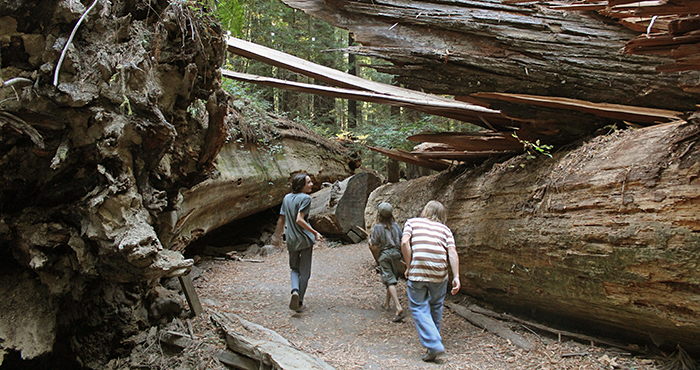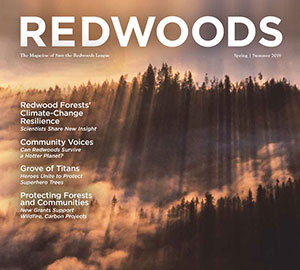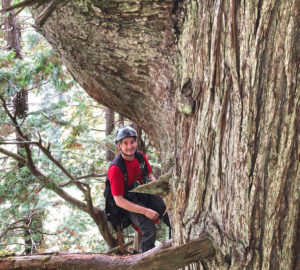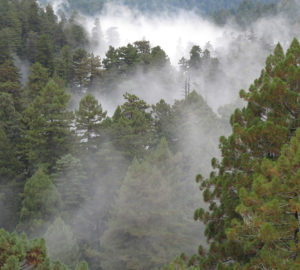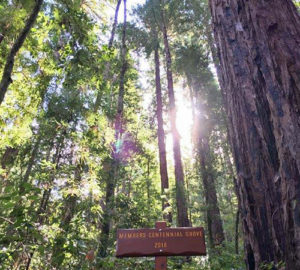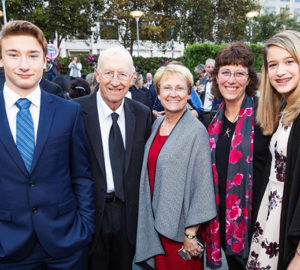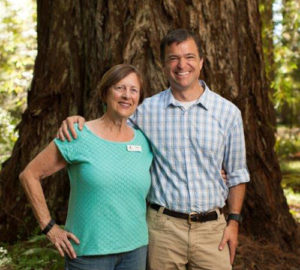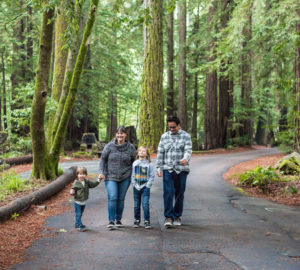Last winter’s intense wind and rain brought down giants throughout the redwood range, including the 1,000-year-old Advocate Tree in the Forest of Nisene Marks near Santa Cruz, and a 300-footer in Prairie Creek Redwoods State Park near Klamath.
It is true that seeing any of these towering giants fall is sad for us because we have so few left. Only 5 percent of the original old-growth coast redwood forest remains along the California coastline between Big Sur and the Oregon border, and the last remaining giant sequoia live in scattered groves along the western slopes of the Sierra Nevada. But under the surface of the sadness lies a brighter, long-term scientific view.
When a giant redwood falls, it begins a critical phase in the forest lifecycle, contributing to the environment in different ways. Critical to biodiversity, they create gaps in the canopy, bringing light to the forest floor for younger trees to thrive. They provide habitat for a wide variety of wildlife, from insects to black bears. Trees that have fallen into and across streams provide calm pools and new shaded habitat, perfect for imperiled fish such as coho salmon and steelhead trout.
Downed trees also provide recycled nutrients for new herbaceous plants, mosses, lichens, fungi and other trees. And because redwood is extremely slow to decay, the large amounts of carbon that the tree absorbed while alive will remain in its wood for decades, if not centuries, allowing the fallen giant to continue to play a lead role in the climate change solution.
With your support, Save the Redwoods League can work hard to make redwood habitats as healthy as possible. Our broad-scale forest restoration projects in the next 100 years will strive to link old-growth groves to protected, regenerating forest, creating conditions for massive redwoods to grow in much larger areas. Yes, trees will still fall, but for future generations, these events will reflect the dynamic nature of a healthy forest. If we commit to our work as stewards of the world’s most superlative forest, young forests will heal and become forests of giants, standing tall in an intact ecosystem, the likes of which we have never seen in modern times.
Listen to a radio interview of Emily Burns, Director of Science for Save the Redwoods League, in which she talks about the Pioneer Cabin Tree.
Read about Redwoods Rising, an ambitious new project by the League and Redwood National and State Parks to grow old-growth forests for future generations.
Contributors: Kyle Cooper, Mike Kahn, Deborah Zierten
